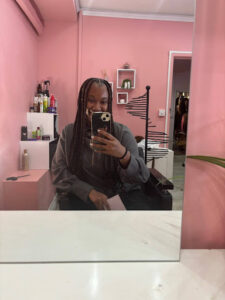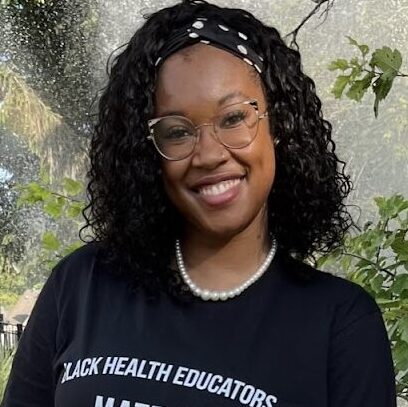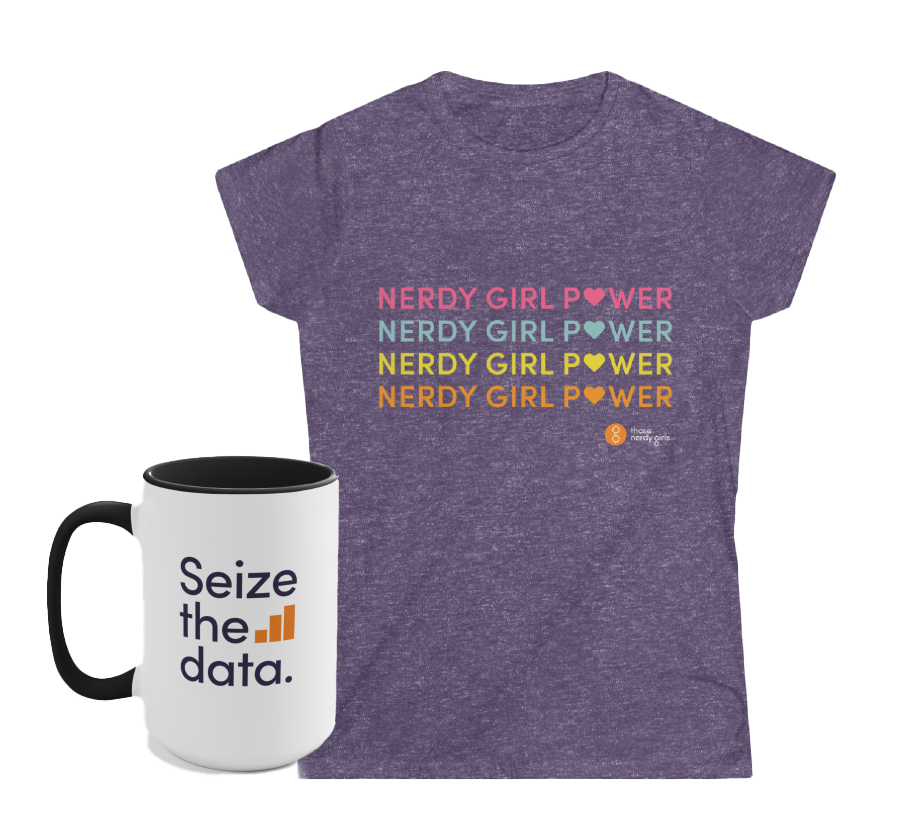A recent Consumer Report has made waves for its coverage about synthetic braiding hair products and their potential link to chronic health issues, especially among Black women. While these concerns are valid, the report has significant blindspots and should be interpreted with caution.
Since time immemorial, braided hair extensions have been used as a protective style and versatile mode of cultural expression for people across the Black Diaspora and beyond, so these new insights into the potential harms of beauty products marketed towards Black communities can spur some inner conflict. Specifically, people may find this information in equal parts essential and a total buzzkill from a practical and aesthetic standpoint (hi, it’s me, I’m “people”).
After digging deeper into the methods and established takeaways from studies on synthetic braiding hair, I’ve found that
1️⃣ While the Consumer Report found traces of potentially worrisome substances in synthetic braiding hair, we do not have enough information to conclude that these traces are in high enough concentrations to be concerning.
2️⃣ The way we handle and maintain synthetic hair may be just as important to our long-term health as the brand of hair itself.
3️⃣ You can still get a braided protective style with little-to-no exposure to harmful manufacturing chemicals; and
4️⃣ Much more research is needed on the true relationship between the use of synthetic hair and health outcomes, especially given the many structural factors, exposures to other cosmetic products, and numerous other moving parts that weigh on Black women’s well-being each day (https://tinyurl.com/ms99er7f) (https://tinyurl.com/3eme7rxb).
Where are the headlines getting their data?
🕵🏾♀️ Consumer Reports, a nonprofit organization that independently tests and rates products, analyzed ten of the most popular synthetic hair brands for traces of heavy metals like lead (known to increase the risk of developmental and heart complications), carcinogens (cancer-causing substances), and other volatile organic compounds (VOCs) [archived link]. It’s critical to note that Consumer Reports, while popular and widely referenced, does not use a peer-review process to check their data collection process or results before publishing their findings. And, historically, the platform also has a habit of writing alarmist headlines with potentially misleading data interpretations to garner public attention.
What does the Consumer Report actually tell us, and is it really cause for worry?
The full test results revealed that all ten of the synthetic hair brands contained some combination of VOCs. Additionally, nine out of the ten products contain lead. In many cases, lead is just a naturally occurring contaminant in the ingredients used to make cosmetics, but it has also historically been used to make colors “pop” and resist moisture . At face value, these findings are concerning, but beyond the thumbnails, there’s some nuance and context worth further investigation:
The standard the study uses for whether a synthetic hair product’s ingredient list was dangerous was based on California-specific safety recommendations for ingestion, not what’s considered safe for putting on your skin (scalp) or weaving into your hair. For additional context, California’s restrictions on the ingredients used in cosmetic products tend to be very conservative – usually more conservative than nationwide restrictions . For drinking water, meats, and even root vegetables (grown in soil, where lead is naturally occurring), it’s extremely sensible for regulatory bodies to tightly monitor lead content [archived link], since these products are eaten and directly processed by our bodies. But since most of us don’t intentionally eat or chew on our braids, it makes sense for synthetic hair to have more leeway.
- 💄 Consider this: [archived link] The highest amount of lead detected in the synthetic hair brands tested contained 0.2 mg/kg of lead, which is 50x lower than the FDA’s limit for lead in lipstick [archived link](which, as noted, we ingest far more than hair!). You can also relax about lead in your lipstick, because over 99% of samples tested are below this conservative limit.
Consumer Reports also sounded the alarm on acetone, but anyone who has ever gone to a nail salon (or used acetone to remove their nail polish at home) has been exposed to acetone in concentrations higher than what you’d find in most synthetic braiding hair. If we’re continuing to use exposure by ingestion (eating or drinking) as our reference point, it’s worth noting that the EPA sets a dose [archived link] for oral acetone exposure that is likely safe at 0.9 kg/mg/day. Even the highest synthetic braiding model had only 0.7% of that amount. This is not to say that even small concentrations of acetone are “good” – only that our day-to-day exposure* to acetone falls far below the threshold of what the EPA considers concerning.
- *⚖️ Health Equity Alert: This Consumer Report piqued my interest about whether/how exposure-related health risks fall disproportionately on those who work with beauty products as part of their jobs, from nail salon artists who spend hours each day surrounded by chemical fumes to the factory/plant workers who preserve and package bundles of synthetic hair before they’re shipped. More studies are needed on how cosmetic products pose an occupational hazard for these workers and what sorts of protections need to be put in place.
Overall, it’s unclear from this report whether exposure to VOCs from synthetic braids exceeds safety standards. The harms of VOCs are amplified when they are inhaled as gases, meaning that VOCs in synthetic hair products could be most dangerous when exposed to heat rather than when they’re lying dormant on your skin. It’s true that many stylists seal braids using a lighter, flat iron, or (Lord, help us) boiling water, but there are also alternative and less dangerous ways to ensure that our styles hold for several weeks.
Public conversation around the potential harms of synthetic braiding hair is largely anchored in anecdotes about people’s scalps becoming inflamed shortly after getting braids installed. I’ll never forget that one time in 2017 when my newly-braided hair felt as if it had burst into flames. On the verge of tears, I sped home and ran into the shower with a full bottle of apple cider vinegar, certain that I could balance out the itchy alkaline content of my hair extensions with a heavy dousing of acid. It didn’t work very well. Turns out my braids were just too tight, as may be the case for many of those reporting adverse reactions braiding hair.
🤷🏾♀️ The TL;DR of the Consumer Report is that there are traces of potential concerning substances in synthetic braiding hair, but we do not have enough information to conclude that these traces are in high enough concentrations to be concerning. More peer-reviewed studies are needed on whether we need tighter restrictions on the ingredients in synthetic braiding hair, but in the meantime, it’s important to know that simply detecting the presence of a chemical does not automatically mean that it’s present in high enough amounts to be dangerous.
🤯 This is still an overwhelming amount of information, so what now?
Personally? I’m getting some knotless braids installed this week, and I plan to keep those braids in my head until May. But I’ll be making some modifications to reduce my personal health risks and those of my hair stylist and other loved ones:
1️⃣ I’m saving up for hair bundles made of human hair, not synthetic hair. Braided extensions made of human hair tend to be more expensive (and you have to handle it with more care, since it’s similar to your own natural hair), but to our knowledge, human hair does not require the same chemicals for manufacture and preservation. Human hair extensions also typically last longer, meaning that you get longer (and more comfortable) wear for a higher cost. The ethical implications of sourcing and wearing human hair extensions still need to be explored in greater depth, but it is nonetheless worth weighing as a more durable and environmentally friendly option to synthetic hair.
2️⃣ Regardless of whether my hair extensions are made of human hair or synthetic, I’m going to stop outwearing them. To minimize my overexposure to heavy metals and VOCs, I’m developing the habit of wearing my extensions for much shorter spans of time (4-6 weeks, rather than my typical 8) and “breaking up” my seasons of braided hair with natural protective styles like two-strand twists . This has the auxiliary benefit of reducing the tension and irritation I constantly feel on my head; it’s nice to #LetYourEdgesBreathe.
3️⃣ If ingestion is the primary mode of harmful chemical exposure, then there are at least two groups of people who are at a higher risk than I am: (1) small children, who are much more prone to taste-testing hair and other pretty things, and (2) my hairstylist, who is much more likely to place hair in and around her mouth when completing a braid installation.
- To significantly minimize the risk to small children (I have lots of baby cousins), I plan to place my hair in buns, small ponytails, or otherwise tucked away from their curious little grasps.
- To help protect my hairstylist, both of us can wash our hands before and after the installation process, and I can suggest that we take short breaks when we eat to avoid strands contaminating our food (as we well know, braiding installation takes hours, sometimes spanning a full day’s worth of meals). If your hairstylist is like mine, she occasionally holds small bundles of hair in her mouth to streamline the hair-weaving process; be a dear and volunteer to divide the hair into small bundles yourself!
4️⃣ To seal the ends of my braids, I’m requesting that my stylist braid as far down as she can and tie my ends into small slipknots. To “soften” my extensions, I’ll use setting mousse. These strategies will prevent any VOCs from releasing into the air as gases, since no heat from water or flames will be used on my hair extensions. It may take a little extra time, but what’s another hour after sitting in that salon chair for eight hours anyway?
📌 These tips aside, it’s also our shared responsibility (and in our collective best interest) to navigate conversations about Black women’s hairstyles sensitively and appropriately. Manufacturing processes and practices ABSOLUTELY have an impact on our health, and there unquestionably needs to be more governmental oversight, regulation, and brand transparency of cosmetic products marketed towards the Black community. Even so, emerging research on synthetic hair should serve as a supplement to – rather than diversion from – our fights against the larger-looming mechanisms of inequity shaping Black women’s health outcomes. Remember: Fear-mongering and distraction are health injustices in their own right.
Stay safe, stay well, and stay gorgeous!
Love,



